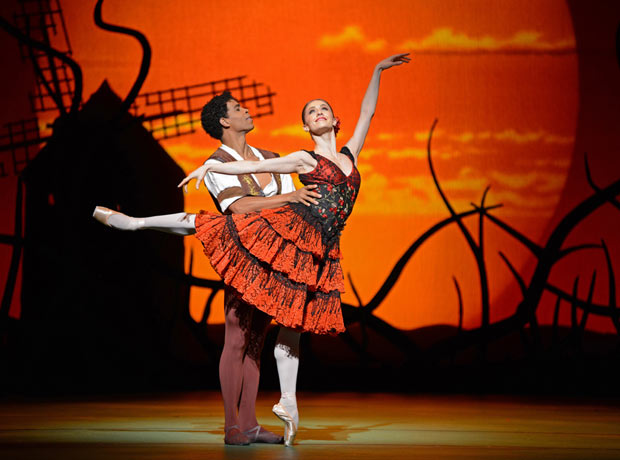
© Dave Morgan, by kind permission of the Royal Opera House. (Click image for larger version)
Royal Ballet
Don Quixote
London, Royal Opera House
30 September 2013
Gallery of pictures by Dave Morgan
also Premiere curtain call pictures
www.roh.org.uk
Will the Royal Ballet ever get Don Quixote right? This is their third go at finding a way of making the Petipa classic their own: they’ve tried Baryshnikov’s way and Nureyev’s way and now it’s Carlos Acosta’s turn. He is widely liked and admired and I think everyone would agree that he’s earned the chance to stage a piece which is clearly close to his heart; if goodwill could guarantee success this would surely be a smash-hit for the Royal Ballet both artistically and at the box office.

© Dave Morgan, by kind permission of the Royal Opera House. (Click image for larger version)
It’s a tough task, though. If it had never been tried till now, the idea of making a ballet out of Cervantes’ complex, rambling and episodic novel would seem completely absurd, and indeed the version Ninette de Valois made for this company in 1950 (using a different score, despite what the current programme book implies) seems to have gone a long way to prove that a strictly literary approach simply won’t work. Just reading the synopsis makes my head spin. Petipa’s version of course goes to the opposite extreme, ditching almost everything and leaving the thinnest possible plot: we see just enough of Don Quixote to justify the title but essentially we’re watching two hours of Russianised Spanish dancing, and it needs a huge input of energy and commitment from the dancers to hold our interest.
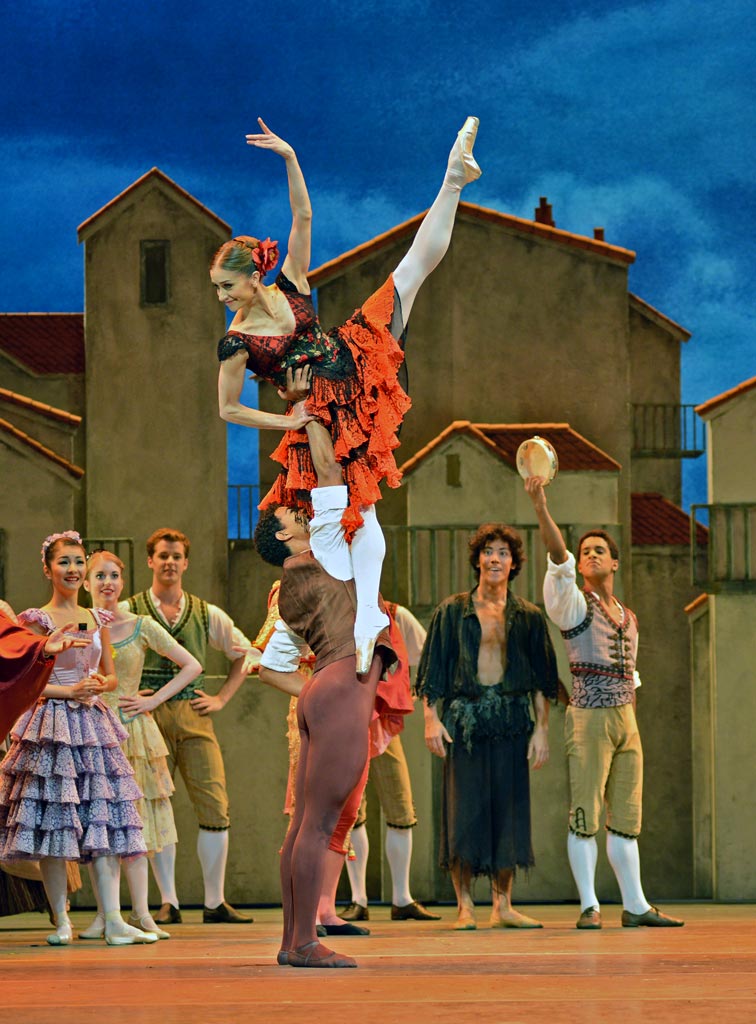
© Dave Morgan, by kind permission of the Royal Opera House. (Click image for larger version)
It’s especially challenging for the Royal Ballet, whose repertoire and style are built on the subtle understatement of Frederick Ashton and the deep psychological explorations of Kenneth MacMillan: hot-blooded Latin exuberance is not really their thing. (Except for those who actually are hot-blooded Latins, obviously.) Opening night made me feel that although Acosta seems to have the dancers entirely onside, some of their inhibitions still show, some of the smiles are a bit strained, and it will take a few performances for them to relax and make us believe it really is a lot of fun.
Meanwhile, there are things to appreciate in this new approach. Tim Hatley’s designs mostly work well: I love the cut-out houses in the town square and the way they move around – like most of the rest of the ballet, they’re not to be taken too seriously and also they do give a little added interest to what seems a very long first act. I also like the predatory windmill which stalks the Don in the gypsy scene, growing larger and more threatening with every appearance; and most of all I like the horse, a wonderfully decrepit creature perfectly suited to its owner.

© Dave Morgan, by kind permission of the Royal Opera House. (Click image for larger version)
The changes which Acosta has made to the staging are intelligently thought out, with just a couple of exceptions: I wished he hadn’t chosen to play his mock-suicide so far upstage, and the windmill-tilting bit needs a bit of rethinking to make the effect he wants. He’s tried very hard to bring a sense of naturalism to the crowd scenes – I understand why he wants to do it but I’ve yet to be convinced it’s a good idea. Classical dancing isn’t naturalistic and when the ‘normal’ milling around suddenly gives way to a big ensemble or an amazingly technical solo I find it looks more rather than less peculiar.

© Dave Morgan, by kind permission of the Royal Opera House. (Click image for larger version)
It was Acosta and Marianela Nunez, as the second cast, who rescued the last RB production 12 years ago, bringing it to life after a dismal first night. In those days she was very much the new girl, and Acosta’s protegée: now she’s his equal, the company’s leading lady, and though she’s lost some of her youthful openness and naivety she’s gained in assurance and stagecraft and has also deepened her interpretation. She brings real humanity to the role, most particularly in the private pas de deux at the start of the second act, which shows us a quite different young woman from the one who flirts so charmingly in public. Acosta, inevitably, has by now lost some of the edge of his own technique – his turns were noticeably more impressive than his jumps – but he has so much charm and charisma that, frankly, who cares?

© Dave Morgan, by kind permission of the Royal Opera House. (Click image for larger version)
The big character roles showed a nice straightforward Lorenzo from Gary Avis; Bennet Gartside, rather unexpectedly cast as Gamache, getting funnier as the evening wore on; and Philip Mosley as Sancho Panza doing what he could with a role that’s mostly slapstick. Don Quixote himself (Christopher Saunders at this performance) is such a difficult challenge: there’s really no way for him to show us what’s going on his head and one day I’d like to see a really great actor in the role, to see if he could convince us there’s more there than a rather sad and mildly deranged old man.
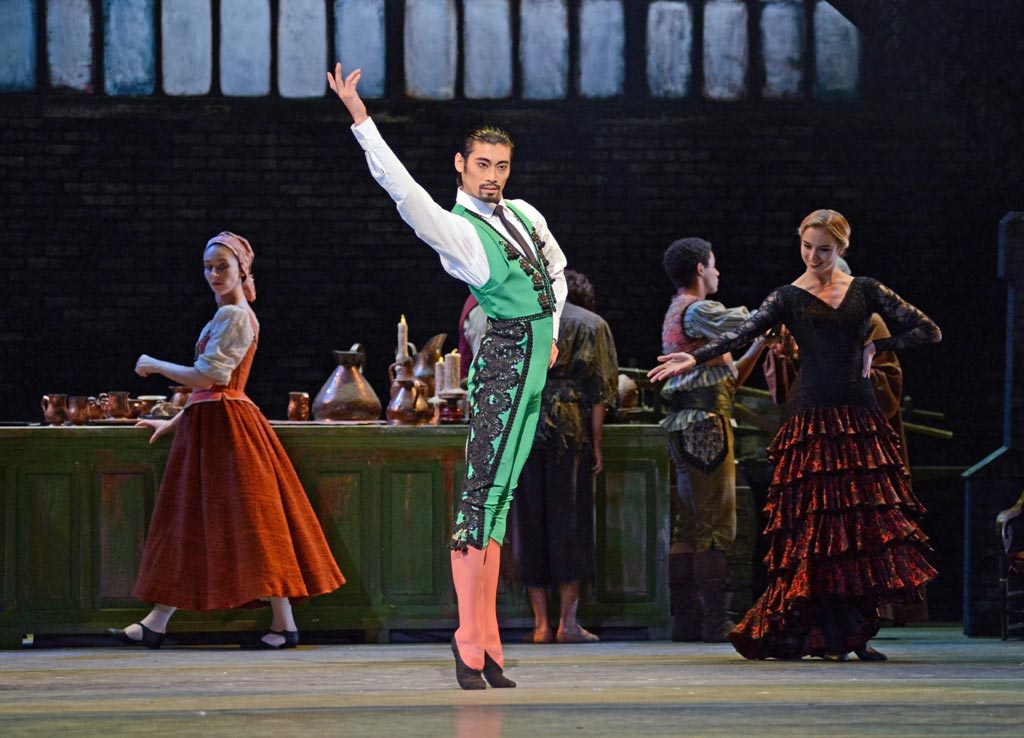
© Dave Morgan, by kind permission of the Royal Opera House. (Click image for larger version)
Laura Morera was very well cast as the street dancer, Mercedes, and her sharpness and attack impressed as ever. Ryoichi Hirano was one of the best Espadas I’ve seen from this company – stylish and with lots of presence – and if ever someone decide to update the plot of the ballet and make Espada a star Formula 1 racing driver rather than a toreador, he’d be perfect. (And the first entry of him and his team is one of my most favourite bits in the whole evening – so sublimely silly. A pity though that they’ve abandoned the attempt to stick knives into the stage for Mercedes to dance round – it always went wrong, to general amusement, and just arranging their wine cups in a neat line isn’t nearly so much fun.) Yuhui Choe and Beatriz Stix-Brunell were sweet and pretty as Kitri’s friends; Melissa Hamilton needs a bit more confidence and control to convince me she’s a Queen of the Dryads.

© Dave Morgan, by kind permission of the Royal Opera House. (Click image for larger version)
So – a box-office success, perhaps, but slightly off-target artistically. And I do think that if the company can’t make this version fly they should perhaps admit that Don Quixote just isn’t a good fit for them, and stop trying.












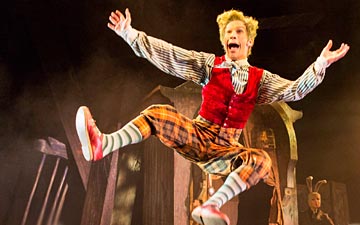
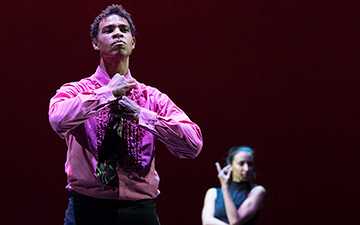
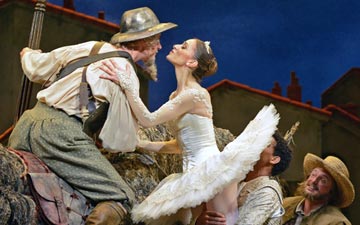
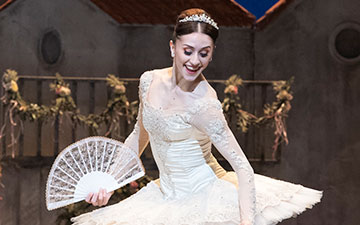
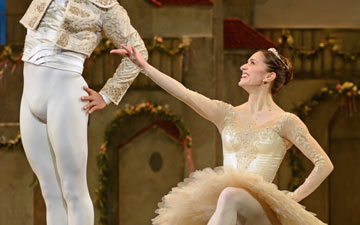
[…] New York Times Dance Tabs Financial Times The Standard The Telegraph The Guardian The Guardian London Dance Londonist Metro […]
I watched Don Quixote on Christmas Day on TV BRILLIANT.